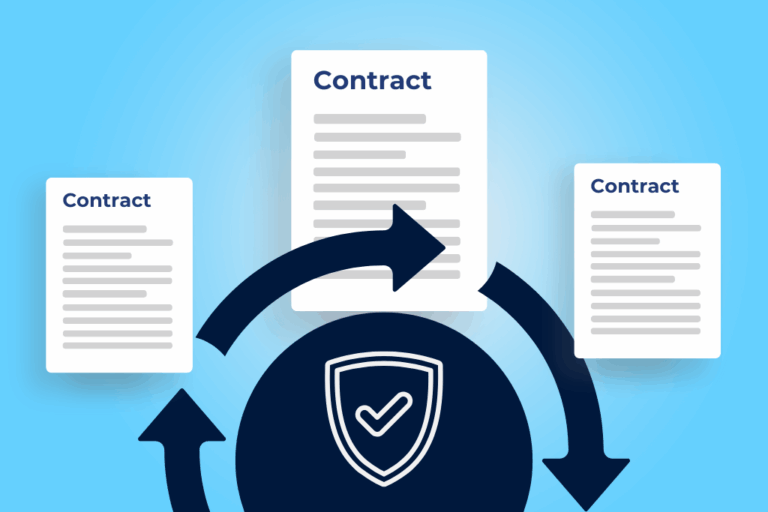Definition
Legal entity management is the process of organizing, maintaining, and ensuring compliance for a company’s legal entities across jurisdictions. For organizations with complex structures or global footprints, it’s critical to track governance, statutory obligations, and regulatory filings to avoid penalties and operational risks.
As organizations grow and expand, maintaining visibility over multiple legal entities becomes increasingly complex. After all, failure to manage this effectively can lead to significant compliance risks, financial penalties, or even reputational damage.
The Key Components of Legal Entity Management
Legal entity management involves several interconnected activities, including:
- Compliance Monitoring
Organizations must track regulatory requirements across jurisdictions to ensure timely compliance. For instance, annual filings, license renewals, and director updates must be done accurately and on time. - Entity Governance
Governance involves maintaining up-to-date corporate records such as shareholder agreements, board resolutions, and meeting minutes. These documents are essential for demonstrating compliance and ensuring accountability. - Data Centralization
Managing data related to entity status, ownership, and reporting is a cornerstone of effective entity management. Decentralized data can lead to inefficiencies and errors, particularly in multinational organizations. - Stakeholder Collaboration
Legal teams, finance teams, and C-level executives must collaborate seamlessly to ensure transparency and accountability across the organization.
Main Challenges
Despite its importance, legal entity management can be a daunting task for organizations, especially when:
- Operating across multiple jurisdictions with varying regulatory requirements.
- Relying on manual processes that are prone to errors and inefficiencies.
- Lacking real-time visibility into the entity data needed for strategic decision-making.
The Role of Technology in Streamlining Entity Management
Back in 2021, E&Y estimated that while a majority of organizations use purpose-built legal entity management technology, 96% reported challenges with their systems. For this reason, opting for an external solution to manage entities became more and more common. Today, this technology plays a crucial role in improving efficieny, accuracy and scalability.
Let’s explore how technology is transforming legal entity management:
1. Centralized Data Management
One of the biggest advantages of entity management technology is the ability to centralize critical entity data in one secure location. As a result, legal teams can easily access and update entity details, track compliance deadlines, and ensure consistency across jurisdictions.
2. Automation of Repetitive Tasks
Routine tasks like filing annual returns, updating director information, or generating compliance reports can be automated with entity management solutions. Moreover, automation reduces manual errors and allows legal professionals to focus on high-value activities.
KPMG’s report on technology adoption in legal functions notes that automation can save organizations up to 20 hours per week on compliance-related activities.
3. Real-Time Reporting and Insights
Entity management technology provides dashboards and reporting tools that give executives real-time visibility into compliance statuses, governance metrics, and risks. Consequently, leaders can make informed decisions backed by reliable data.
4. Enhanced Collaboration
Modern solutions enable seamless collaboration between legal teams, finance teams, and other stakeholders. For example, cloud-based platforms facilitate real-time document sharing and tracking, ensuring that everyone stays aligned.
5. Simplified Regulatory Compliance
With built-in compliance checklists and jurisdiction-specific rules, entity management software ensures that your organization remains compliant, even in complex regulatory environments.
Best Practices for Effective Legal Entity Management
To maximize the benefits of entity management, organizations should:
- Invest in scalable technology: Select solutions that grow with your organization and adapt to changing regulatory landscapes.
- Ensure data accuracy: Regularly review and update your entity data to avoid inconsistencies.
- Foster collaboration: Encourage cross-functional collaboration to improve governance and decision-making.
- Monitor trends: Stay updated on regulatory changes that could impact your entity management processes.
The Future of Entity Management
The importance of efficient this activity will only increase as organizations face more stringent compliance requirements and global expansion pressures. By leveraging technology, businesses can turn what was once a labor-intensive task into a streamlined, strategic advantage.
Why Technology is the Way to Go
Organizations that adopt entity management technology achieve better compliance outcomes, reduced risks, and improved operational efficiency. All in all, the benefits are clear: enhanced visibility, greater control, and a more proactive approach to governance.
Ready for a change?
Ready to take your entity management to the next level? Discover how our comprehensive legal entity management solution can centralize, simplify, and strengthen your legal operations while reducing costs and ensuring compliance. Stay tuned for more details about our cutting-edge platform!



